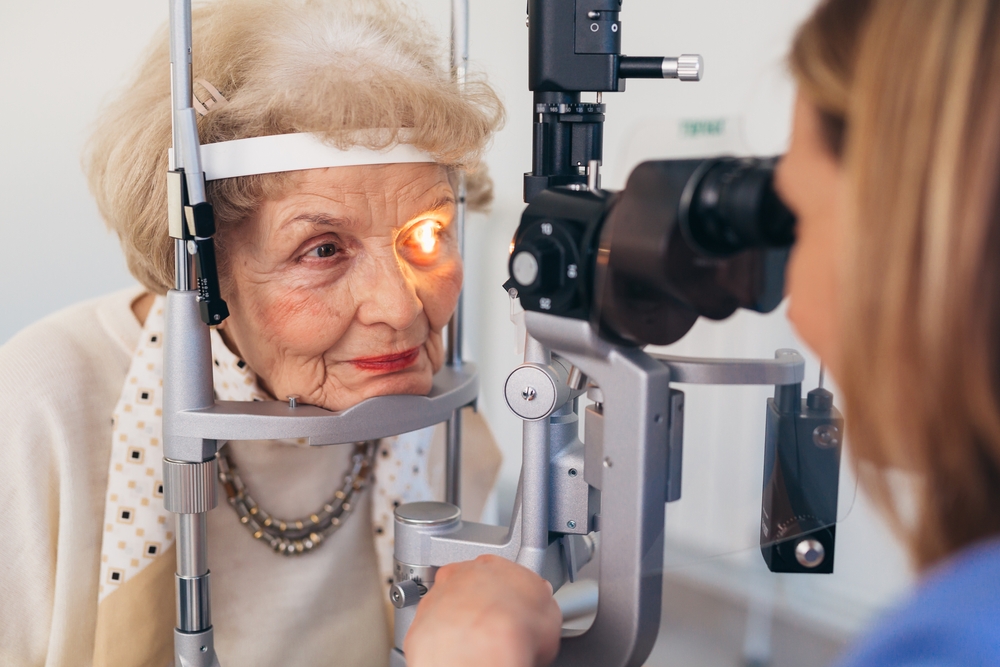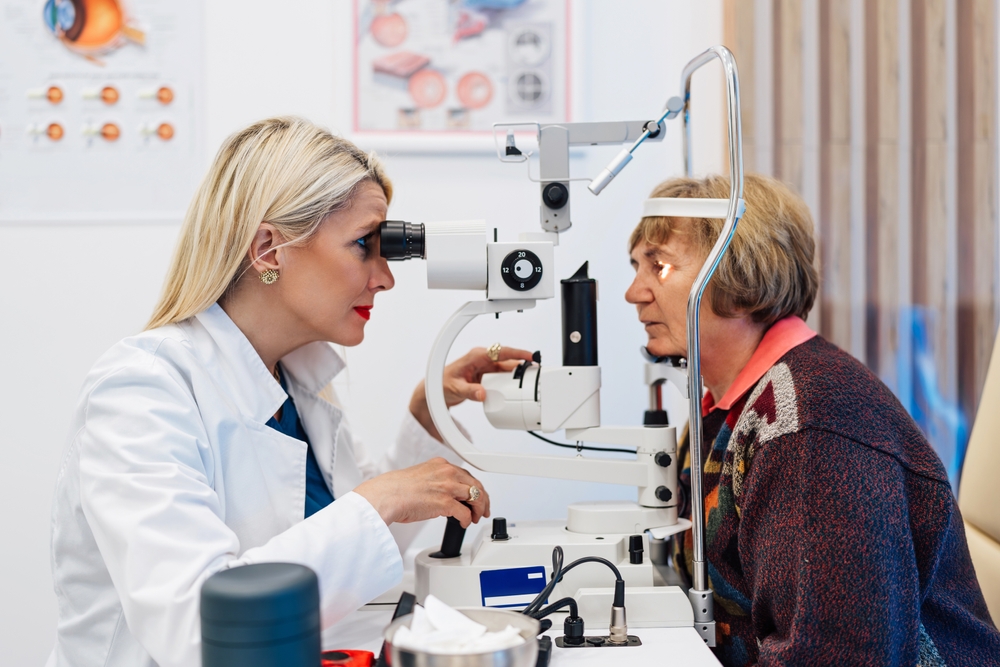Cataracts are one of the most common age-related eye conditions and the leading cause of blindness worldwide. Since cataracts are a natural part of the aging process within the eye, everyone will eventually develop them if they live long enough.
The good news is that early detection through proper diagnostic testing can help you and your eye doctor develop the best treatment plan for your vision needs. Keep reading to learn more about cataracts, the diagnostic tests used by eye care specialists, and treatment options!
What are Cataracts?
Cataracts occur when proteins and fibers within the eye fray and detach from the lens and collect in clumps on its naturally clear surface. As the clumps collect, they cover more of the lens, blocking light from reaching the retina and impairing vision.
Cataracts typically develop slowly, and it can take years for them to progress to the stage at which they start to have noticeable symptoms. The symptoms of cataracts include:
- Cloudy or blurry vision
- Difficulty seeing in low-light conditions
- Poor night vision
- Glare and halos
- Double vision
- Changes in color perception
- Frequent changes to eye prescription
- Pupils that appear milky or yellow
Because the symptoms of cataracts can be mild in their earliest stages, some people may not be aware they have the condition until it is diagnosed.
What Tests are Done to Diagnose Cataracts?
The tests to initially diagnose cataracts include the following:
Visual Acuity Test
This test uses an eye chart to measure how well you can read a series of letters, numbers, or symbols at different distances. The results help determine the extent to which cataracts might be affecting the clarity and quality of your eyesight.
Slit Lamp Exam
During a slit lamp exam, your ophthalmologist uses an instrument that shines an intense line of light to examine the structures within your eye. This test allows for a detailed examination of the cornea, iris, and lens for the signs of cataracts.
Dilated Retinal Exam
After dilating your pupils with special eye drops, this test uses an instrument with a microscopic lens to provide a clear view of the retina and other structures at the back of the eye. It also allows your ophthalmologist to examine the lens further.
Tonometry
Tonometry tests the pressure inside your eye using a device that gently touches the cornea to measure the pressure required to flatten a part of it. This test can rule out other eye conditions that have symptoms similar to cataracts.
When Should You Get Tested for Cataracts?
It’s important to get comprehensive eye exams every one to two years for adults over 65, even if you aren’t experiencing any symptoms. However, you should schedule an appointment sooner if you notice any changes in your vision.
Age is the primary risk factor for developing cataracts, with most people showing some signs of lens clouding by age 60. If you have any common risk factors, like smoking, diabetes, or high blood pressure, your eye doctor may recommend more frequent screenings.
It’s particularly important to seek immediate evaluation if you experience sudden vision changes, severe glare that interferes with daily activities, or difficulty performing routine tasks like reading or driving.
What to Expect During Your Cataract Evaluation
A complete eye exam for cataracts usually takes about 2-3 hours. Your eye doctor will start by asking about your medical history, what medications you take, and any vision problems you’ve noticed.
The exam itself involves several tests to evaluate your eyes and vision. Your doctor will also ask about your daily activities and what you need your vision for most.
Do you drive at night? Do you read a lot? Do you work on a computer?
This information helps determine whether you need treatment right away or if it’s okay to wait and monitor the cataracts as they develop. Some people can manage fine with stronger glasses for a while, while others might need surgery sooner to stay safe and independent.
What are the Treatments for Cataracts?
Recommended treatments for cataracts depend on the severity of the condition. In their early stages, non-surgical treatments may help manage the symptoms of cataracts.
Non-surgical treatment options include prescription glasses or contact lenses, magnifying lenses, brighter lights, anti-glare sunglasses, and eye drops. Non-surgical treatments can temporarily alleviate symptoms, but they usually become less effective as cataracts worsen.
The only effective treatment for cataracts is cataract surgery. It is considered one of the safest and most successful surgical procedures.
During cataract surgery, the lens clouded over by cataracts is removed and replaced with an artificial intraocular lens (IOL). The IOL restores clear vision and prevents cataracts from re-forming.
Depending on the IOL you chose, cataract surgery can be an opportunity to improve the acuity as well as the clarity of your vision. Advanced IOLs can correct vision at multiple distances and often come in toric versions for patients with astigmatism.
Cataract surgery is typically performed on one eye at a time, with a break in between to allow for healing. It is a quick, outpatient procedure that takes approximately 10-20 minutes to complete.
Are you experiencing symptoms of cataracts? Schedule a cataract evaluation at Eye Center of Texas in Houston, TX, today!













